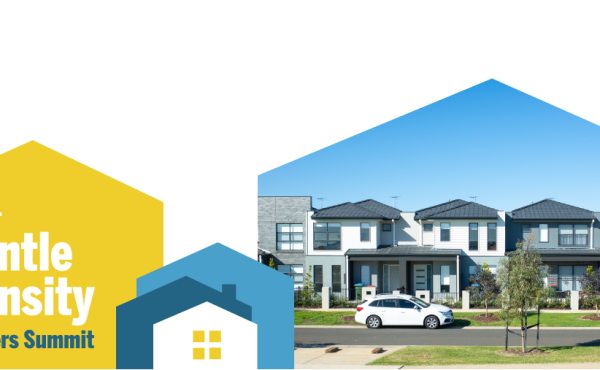

[Editor’s Note: Former Vancouver reporter Christine McLaren is traveling around the world as the resident blogger for the BMW Guggenheim Lab, a mobile think tank investigating solutions to urban problems. In October, 2011, the project wrapped up its three-month run in New York City and in currently in Berlin. This story on affordability was originally published on Lab|log at bmwguggenheimlab.org. © 2012 The Solomon R. Guggenheim Museum, New York. As a city struggling with affordable housing, its relevance to goes beyond the borders of Berlin. Used by permission.]
Last week I sat down with Barbara König from the Bremer Höhe Genossenschaft (housing co-op, roughly translated) to chat about how the Genossenschaft model could be used as an effective and empowering tool for managing the creation of more affordable housing in Berlin.
One of the ways she suggested Berlin’s government could help make this possible is through designating property currently held by the Liegendschaftsfond (the government-owned organization responsible for selling off vacant government-owned properties to the highest bidder for profit) for such projects.
But König isn’t the only one who sees potential for these spaces beyond just profit. I’ve talked to many people in Berlin recently who have pointed to the same spaces as major potential stepping-stones that could help get innovative, solutions-based affordable housing projects off the ground.
Matthew Griffin is another one of those people. In 2011 the Berlin-based architect and member of Team 11 (a group of architects who seek to, through their practices, “address large-scale urban development issues facing Berlin, and the role that architects could play in dealing with them”) developed, along with his partner Britta Jürgens, a property development model that aims to use mixed ownership to create more or less “cost-neutral” affordable housing.
He calls the model the tripod system, and it looks like something like this:

The idea is basically to build a building that is split into three types of units: privately owned, co-operative rentals, and subsidized.
The top 40 percent of the building would be sold as condominiums. The profit made from those sales would then subsidize the bottom 30 percent of the building as low-income units at a 60 percent rental-price reduction. The middle 30 percent of the building would be owned by a Genossenschaft (the model König and I spoke about), whose members would pay average rent.
“The idea is that the state would support a model like this by providing land on a long-term lease,” Griffin told me in an interview. “By doing this you can price the long-term lease, you can give it a discount, and that is a subsidy. So you are getting income as a city from the land and you’re maintaining long-term ownership, but also you can use it to support a certain portion of low-cost housing.”
It’s not far removed from the idea of density bonusing—where a city with an especially attractive and tight real estate market can leverage that land value by getting a developer to build community amenities (parks, bike lanes, community centers, social housing, and so on) out of his own pocket in exchange for the right to build higher condo towers than zoning would usually allow.
Today it’s happening more and more in cities like New York, for instance, where that tool is used for social housing. Many cities in the EU (as well as elsewhere), like Munich, require a certain percentage of social housing units in new developments. London’s Olympic Village will also boast social housing amidst market-rate suites once the 2012 games are over, just like Vancouver’s 2010 village. (Though I should mention that not everybody finds it fantastic that the “A’s and E’s” of society rub shoulders in housing developments, as one Vancouver architect and developer once put it rather bluntly, for fear that the “E’s” reduce the value and attractiveness of the “A’s” property.)
The difference in Griffin’s model, of course, is that affordability is the goal of the private development, rather than the concession a developer is making with the goal of more profit, or something forced on them by government.
I asked Griffin if he sees the model as a dangerously slippery slope—one that would tempt the state to shirk their responsibility to take care of affordable housing by shifting more of the load onto the shoulders of the private sector, which is not accountable to the public in the same way.
“Bascially what we’re talking about is redefining the balance between the state and the private sector, and we’re trying to find new ways to get at all the potential that is there. There are a lot of people in Berlin who are interested in alternative ways of doing things. . . . People want to help other people, and it’s an important part of being part of a society,” he said.
“It’s just a question of what’s the most important thing to your city, and what does the city want to do with their assets? If they want to sell their assets to the highest bidder as a tool to make a profit, or if they want to use their assets to actually steer what’s happening in the city, and that’s sort of where we’re coming at.”
What do you think of Griffin’s tripod model? Should the state be making it easier for the private sector to take on the creation of amenities for the public good?
***
Christine McLaren is a freelance journalist who investigates solutions to urban problems. She is currently traveling as the resident blogger for the BMW Guggenheim Lab, a mobile urban think tank investigating urban solutions in nine cities around the world. Her writing and research explores how the shape of our cities impacts the lives and behavior of those living in them and how shifting social, environmental, and economic climates are changing our relationship with the urban fabric. Based in Vancouver, Canada, she has written for publications such as Spacing, Zoomer, BC Business, Unlimited, and Momentum Magazines and reported for numerous print, online, and television news outlets. She was also the lead researcher for award-winning Canadian journalist and New York Lab Team member Charles Montgomery’s upcoming book Happy City, and conducted research for National Geographic Emerging Explorer Alexandra Cousteau‘s upcoming book, This Blue Planet.



